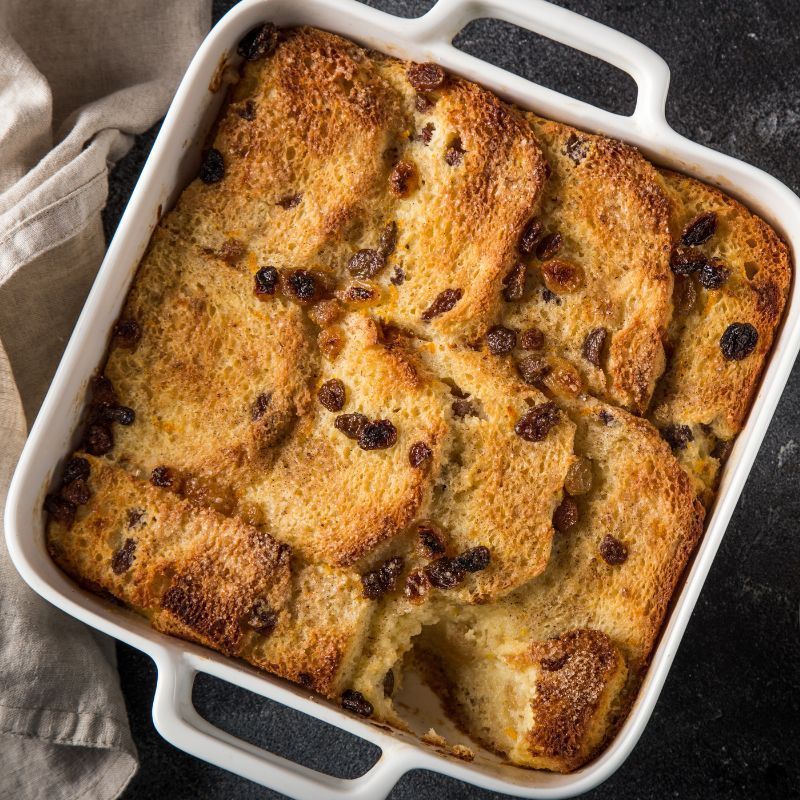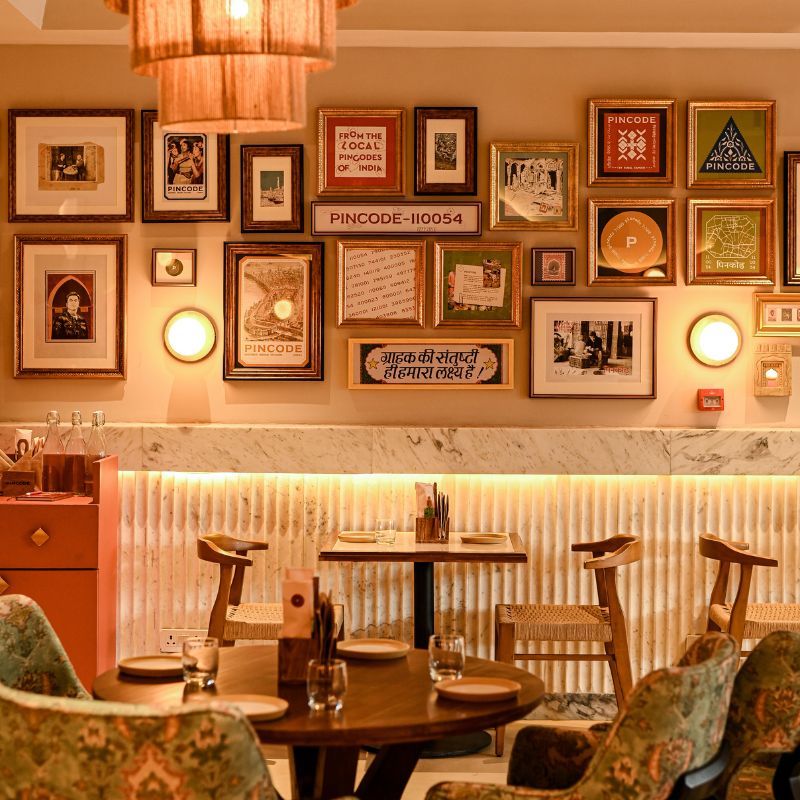
As Delhi gets a new address for north Indian food with an innovative twist at Chef Kunal Kapur’s PINCODE, I can’t help but wonder what new things can be done with the Indian cuisine. It’s Delhi, after all, the capital of Indian food. From vegetarian fares like veg seekh kabab and curries to non-vegetarian eats like the famous butter chicken and whatnot, Delhi has already seen the best of everything.
That was until I had a tête-à-tête with Chef Kunal Kapur, the man behind the kitchen at PINCODE. Now, Kunal Kapur doesn’t need an introduction, he’s a household name. But his venture at Civil Lines in Delhi and what he has done with food from every pincode around the country definitely needs to be introduced to people. While we spoke about PINCODE and what influenced the menu here, Chef Kapur also got candid about his tryst and love affair with all the complex layers of Indian cuisine. Oh, and we also got an exclusive recipe for the chef-special Veg Seekh Kabab. In conversation with a fellow ardent admirer of the culinary tradition of India – Chef Kunal Kapur!
Chef Kunal Kapur on Indian food, and his famous veg seekh kabab recipe
Q: What was the idea behind opening PINCODE in Delhi?
PINCODE, as its name suggests, is an ode to the regions of India, soaked in the colours and patterns of a diverse cultural background and euphoric delights! The roots of this can be found in the cherished collection of family recipes that have been handed down through the ages. Our intent is to revive nostalgic sentiments of the time bygone and reminisce about our childhood memories by sharing delicacies that embody a rich cultural legacy, exuding a homely and comforting ambience.
Q: I read somewhere that you call yourself ‘a kebab and curry guy’. How much of this inclination towards kebabs and curries influences the menu at PINCODE?
As a chef at PINCODE, I’ve poured my heart and soul into creating a menu that reflects my cherished childhood memories. Food has always been a central part of my life, and I’ve spent countless hours with my family learning about ingredients and cooking techniques. The menu at PINCODE is a beautiful fusion of cuisines and culinary traditions from various regions of India, offering a delightful balance of curries, kebabs, and more. From the tangy Yogurt Kebab to the succulent Coastal Chicken Curry, each dish is carefully crafted to transport you to the vibrant streets of India.
Q: Speaking of kebabs and curries, which Indian state or states do you think have the best kebabs and curries?
You know what’s truly amazing? The culinary tradition of India! It’s famous for its incredible flavours and textures, especially in dishes like curries and kababs. What’s even more fascinating is that each state has its own unique and distinctive taste, with original ingredients and techniques that make it truly special. It’s impossible to play favourites, as every state has its own exceptional qualities that deserve recognition. The sheer diversity of Indian cuisine is a testament to its rich culinary heritage, and I believe it would be unfair to show preference to any one state. After all, each state’s cuisine is a treasure trove of flavours and techniques that I am constantly in awe of!
You’ve brought quite a simple yet different chicken recipe to the fore – the pressure cooker chicken curry. Chicken gets cooked quite swiftly and that too in the water released by the meat itself. Could you tell us why you chose a pressure cooker and what makes it unique?
View this post on Instagram
It’s fascinating to discover that the beloved pressure cooker, often seen as a staple in Indian kitchens, actually originated in Germany! Yet, its unparalleled ability to infuse dishes with flavours has made it an indispensable tool in nearly every Indian household. In fact, some of my most cherished childhood memories revolve around the aroma of Chicken Curry simmering in a pressure cooker.
It was a special bonding time with my family, as we gathered around the kitchen, eagerly waiting for the whistle to go off. The rich flavours and tender texture of the curry cooked in a pressure cooker still hold a nostalgic place in my heart. For me, cooking Chicken Curry in a pressure cooker is not just about the culinary technique, but also about connecting with my past and sharing those cherished memories with others. It’s a beautiful example of how food can evoke emotions and create lasting connections, and it’s a joy to incorporate those flavours and memories into my cooking at every opportunity.
Q: How much of your childhood influences your culinary skills?
Growing up, I spent many days accompanying my grandfather on his trips to buy groceries and ingredients in Old Delhi. These experiences shaped my culinary journey and inspired me to become a chef. Over the years, I have honed my skills by innovating traditional dishes while staying true to their authenticity. My knowledge of ingredients and my passion for food are deeply rooted in those memorable visits to Old Delhi.
Q: When we speak of Indian food from Indian homes, there’s so much that’s still unexplored. Which state, in your opinion, has the most underrated and under-explored cuisine?

You won’t believe it, but Odisha’s culinary game is on fire! While it may not get all the limelight like other regions of India, some of the most talented chefs I’ve met are from this state. They’ve got some serious spice skills, using a diverse range of masalas in their curries and dishes that are simply mind-blowing. The flavours they create are totally unique and can’t be replicated anywhere else in India or abroad. Odisha’s cuisine is like a hidden treasure that’s waiting to be explored and savoured. It’s a playful symphony of flavours that are a class apart.
Q: You are synonymous with Indian cuisine, and you have innovated it in a way that it caters to everybody. What are the other cuisines that you enjoy cooking the most?
When I have the luxury of time to cook, I typically contemplate my cravings or desires in the moment. While many individuals tend to categorise food based on its country or cuisine, I firmly believe that food transcends all boundaries and has the unique ability to unite people. For instance, a certain fragrance or ingredient may serve as inspiration to whip up something truly delectable. Ultimately, the joy of cooking lies in the freedom to explore and experiment with different flavors and ingredients.
What is Chef Kunal’s ideal comfort food?
My comfort food is ajwain paratha with sweetened curd and hung pickle, or sometimes lemon pickle. The familiar flavours of this dish instantly brings me comfort and solace, reminding me of simpler times and filling me with a sense of warmth and nostalgia. It’s not just about the taste, but the emotional connection that comes with it, making it a special dish that holds a special place in my heart.
Q: Indian cooking is quite complex, with the right balance of spices and ingredients being very important. For someone who is just starting out cooking, what would you suggest they start with?

As a seasoned chef, I urge beginners and hobbyists to start with simple dishes and fearlessly experiment with new ingredients, sauces, and spices to elevate their creations. Innovation is the key to unlocking one’s cooking prowess, as each new creation builds confidence and refines skills. So, let your imagination run wild, fearlessly explore new ingredients and flavours, and remember that cooking is a joyous journey of creating culinary masterpieces while relishing every bite.
Q: In order to give Indian cuisine a fine dining twist, which elements of it do you think needs to be played with?

From the elegance of Dastak Paan’s low seating arrangements to the warmth of family-style gatherings with heaping plates of delectable Indian dishes, our culinary traditions are diverse and fascinating. While we’ve embraced the European-style of dining with starters, soups, salads, and main courses, the traditional Indian way was different – all the dishes served at once, letting guests savour each morsel at their own pace, with desserts being saved for later.
Just imagining a table adorned with an array of mouthwatering Indian delicacies, enticing guests to indulge in the rich flavours and textures, brings back cherished memories of convivial gatherings with loved ones. A revival of this time-honoured serving style would be a remarkable tribute to the essence of Indian cuisine, fostering togetherness and celebration around the table.
You have cooked for PM Modi, that’s a huge milestone. How was the experience? How was it like having to shift from kababs and curries?
It was a truly humbling experience to have had the opportunity to prepare a meal for both PM Modi and the German Chancellor, Angela Merkel. The task was not without its challenges, as the PM adheres to a vegetarian diet while Chancellor Merkel is a staunch meat-eater. However, it was clear that vegetarian food was to be served. In light of this, I opted to prepare a satvik meal, which provided an exquisite and expansive dining experience. Despite Chancellor Merkel’s usual preference for non-vegetarian fare, she thoroughly enjoyed the dishes that were presented.
Q: As a kebab connoisseur, could you share with us your special recipe for veg seekh kabab for our readers?
Over the years, I have gained extensive training and experience within the food industry, having worked with a diverse range of cuisines from various regions of India. As a result, I am not limited to just kababs and curries, and have also honed my skills in preparing international cuisines. Adaptability is key in this field, and I am always excited to learn and experiment with new ingredients and techniques. Therefore, I am comfortable and confident in adapting to newer things as they arise.
Veg Seekh Kabab recipe by Kunal Kapur
Let’s look at the one of the most loved dishes – Veg Seekh Kabab by the chef himself.
Ingredients
- 2 tbsp Desi Ghee, for frying
- 1/4 cup chopped carrots
- 1/4 cup Cauliflower chopped
- 1/2 tsp Red chilli powder
- 1 tsp Coriander powder
- 1 tsp Cumin
- 1/4 cup Beans (Chopped)
- Salt
- 1 Green chilli chopped
- 1/2 tsp Roasted Cumin Powder
Method
- Heat ghee in a pan and add cumin. Now add the carrots, beans, and cauliflower.
- Saute them for 3 minutes. Remove and cool it completely. Add the rest of the ingredients to it and mix it well.
- Take a sufficient amount of the kabab mixture and put it onto the wooden skewer.
- Alternatively, you can shape the kabab into patties. Heat a pan and add ghee, cook the kababs on all sides.
- Carefully remove the skewer and serve hot.
All Images: Courtesy Kunal Kapur and PINCODE
This story first appeared here
Related: High-Protein Indian Breakfasts That Are Scrumptious, Filling And Easy To Prepare












